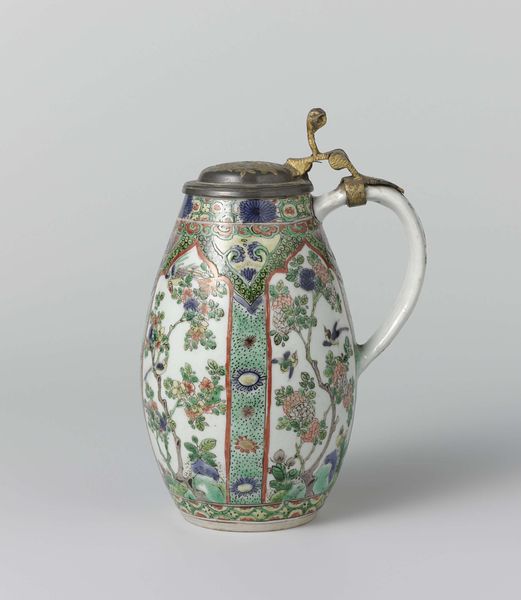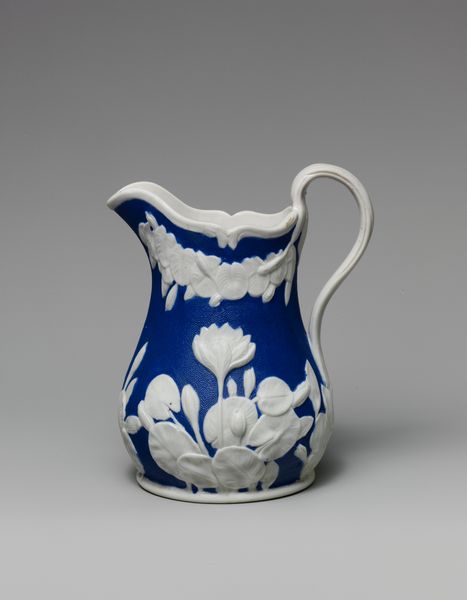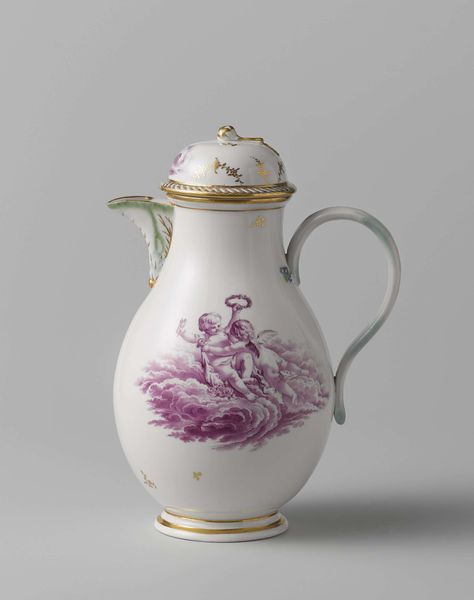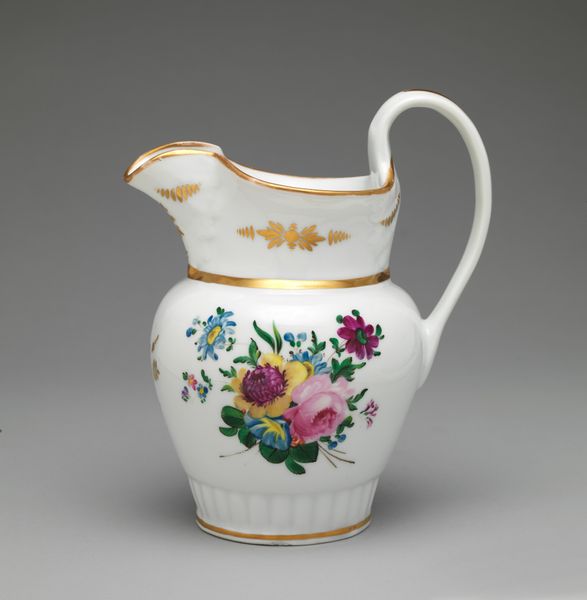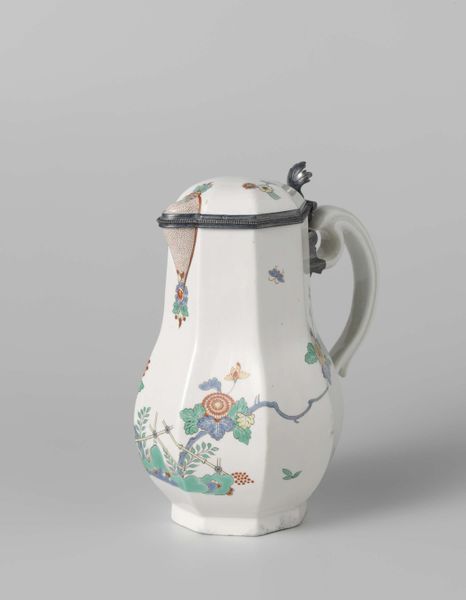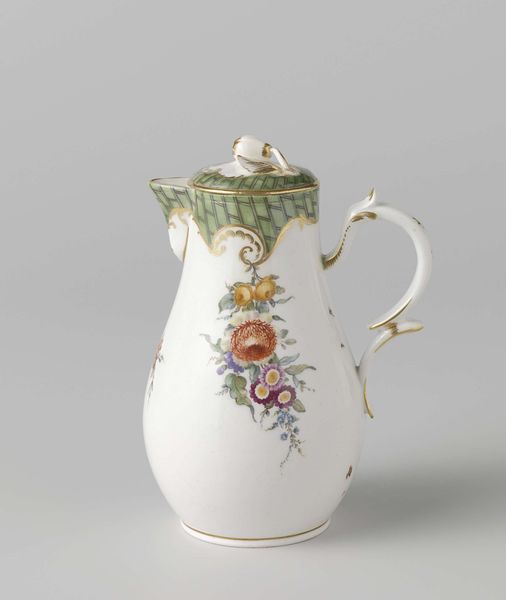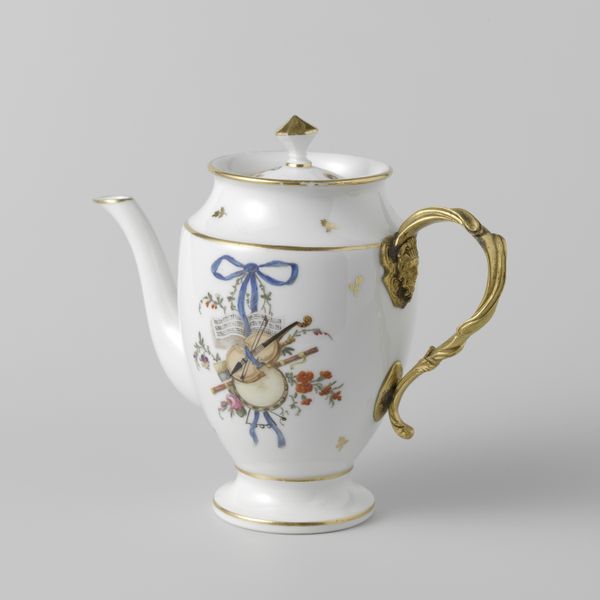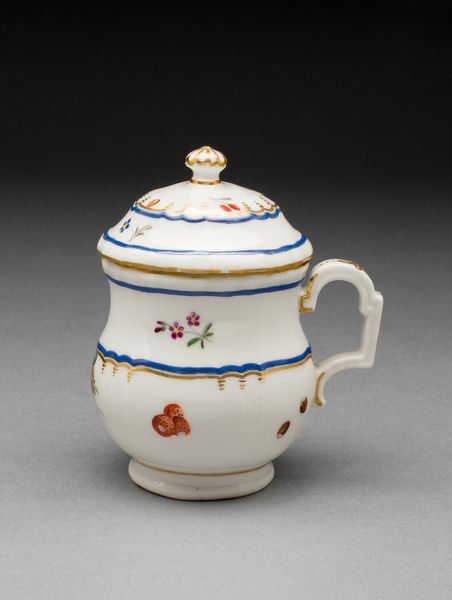
ceramic, porcelain
#
asian-art
#
ceramic
#
porcelain
#
stoneware
#
ceramic
Dimensions: height 21.5 cm, height 16.2 cm, length 20 cm, diameter 4.9 cm, diameter 10.7 cm, diameter 7.2 cm, height 6.7 cm, diameter 5.5 cm
Copyright: Rijks Museum: Open Domain
This Delftware flagon was made by an anonymous maker, and the shiny surface is the first clue as to how it was made. It's tin-glazed earthenware, a process that gives the finished piece the appearance of porcelain. First, the earthenware was fired, then dipped in a white glaze containing tin oxide. Decorations were then painted on top of this, and the whole thing fired again at a lower temperature. You see Chinese motifs, painted with great skill. Notice how the painting is slightly raised, due to the buildup of enamel. The effect is rich, but this wasn't just about aesthetics. Delftware like this was made to compete with the expensive porcelains coming from China in the 17th and 18th centuries. The Dutch potters were masters of imitation. The very concept of ceramics like this speaks to trade, labor, and global exchange. The potters of Delft were responding to a market hungry for luxury goods, and they did all they could to meet that demand.
Comments
No comments
Be the first to comment and join the conversation on the ultimate creative platform.

